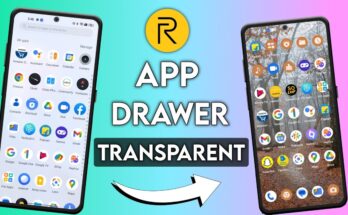Unlocking the Power of Screen Mirroring: A Gateway to Expansive Digital Interaction
Introduction
In this hyper-connected era, the consumption of digital content has undergone a seismic shift. With the ubiquity of smartphones, tablets, and intelligent television systems, an entire universe of multimedia is just a tap away. Among the myriad technological advancements that enhance our engagement with digital media, screen mirroring—commonly dubbed casting—has emerged as an indispensable tool. This functionality seamlessly bridges the gap between personal devices and larger displays, unlocking an enriched and immersive viewing experience. This article delves into the mechanics of screen mirroring, its operational framework, and the various techniques to cast content onto your TV.
Deciphering Screen Mirroring
At its core, screen mirroring is the technological conduit that enables the projection of a mobile, tablet, or computer display onto a broader screen—predominantly a television. This innovation facilitates real-time sharing of photos, videos, presentations, and even applications, making it an invaluable asset for entertainment, professional engagements, and collaborative experiences. Its growing prominence stems from its remarkable adaptability and ease of use, catering to both casual users and tech enthusiasts alike.
The Inner Workings of Screen Mirroring
Screen mirroring harnesses wireless communication protocols to establish a seamless connection between the source device (smartphone, tablet, or computer) and the receiving screen (TV). The process can be executed through several distinct methodologies:
- Wi-Fi Direct – This method empowers compatible smart TVs and mobile devices to establish a direct, peer-to-peer connection, eliminating the need for a shared Wi-Fi network. The setup is swift, offering an efficient and hassle-free mirroring experience.
- Miracast – As a widely accepted standard for wireless screen sharing, Miracast enables direct mirroring between supported devices without necessitating an internet connection. This feature is particularly advantageous for Android users, providing a robust and seamless display extension.
- Chromecast – Google’s proprietary casting technology operates via a compact dongle that interfaces with your TV’s HDMI port. By utilizing a Wi-Fi network, users can project content from supported applications onto their television, offering an intuitive and user-friendly streaming experience.
Guidelines for Casting to Your TV
The method of screen casting may exhibit slight variations depending on the device and technology in play. Here’s a structured approach to initiating the process:
- Confirm Device Compatibility – Ensure that both your TV and source device support screen mirroring technology, whether it be Miracast, Chromecast, or Apple’s AirPlay.
- Establish a Wi-Fi Connection – A stable Wi-Fi network is often crucial, particularly for Chromecast and AirPlay, ensuring seamless content transmission without interruptions.
- Activate Screen Mirroring – Navigate to the settings on your device to enable screen mirroring or casting functionality.
- Select the Target Display – From the list of available devices, choose the appropriate TV or casting device to initiate the mirroring process.
- Commence Streaming – Once connected, enjoy the extended viewing experience with your preferred content showcased on a grander scale.
Advantages of Screen Mirroring
Employing screen mirroring extends a multitude of benefits, revolutionizing the way we engage with digital content:
- Effortless Content Sharing – Projecting photos, videos, and presentations onto a larger screen enhances group viewing, ideal for family gatherings, business meetings, and social interactions.
- Augmented Gaming Experience – Enthusiasts can amplify their gaming immersion by relaying mobile or PC-based games onto a sizable display, heightening engagement.
- Cross-Platform Integration – Diverse mirroring technologies ensure seamless compatibility across various ecosystems, fostering accessibility for users with differing device preferences.
- User-Friendly Setup – Screen mirroring demands minimal technical prowess, making it an approachable feature for individuals regardless of their tech-savviness.
Conclusion
The advent of screen mirroring has fundamentally transformed our digital engagement, bridging personal devices and expansive displays with remarkable fluidity. Whether employed for professional purposes, entertainment indulgences, or gaming marathons, this innovation continues to redefine convenience and interactivity. As technology evolves, the prospects for even more intuitive and seamless casting solutions remain boundless, shaping the future of digital interaction in extraordinary ways.



